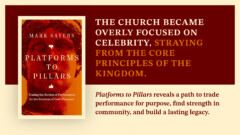I elected to read Freakonomics as part of my ongoing effort to engage with books that have become fixtures on the New York Times list of bestsellers. This title has spent many weeks on that list and has sold millions of copies. This is a bit surprising for a book dealing with the decidedly unsexy discipline of economics. Still, the subtitle, “A Rogue Economist Explores the Hidden Side of Everything” hints at a level of fun, interest and accessibility that might not be found in an economics textbook.
The rogue economist in question is Steven Levitt, who has apparently been awarded the John Bates Clark Medal, which is awarded every two years to the best American economist under forty. That means little to me but it does sound impressive. Levitt, the economist, colaborated with Stephen Dubner, a writer, to create Freakonomics. Levitt, it seems, is a particularly brilliant man and one who approaches the field in an unorthodox way. Dubner reflects on his early impressions of the man: “He seemed to look at things not so much as an academic but as a very smart and curious explorer–a documentary filmmaker, perhaps, or a foreign investigator or a bookie whose markets ranged from sports to crime to pop culture. He professed little interest in the sort of monetary issues that come to mind when most people think about economics.” Levitt’s underlying belief is this: “That the modern world, despite a surfeit of obfuscation, complication and downright deceit, is not impenetrable, is not unknowable, and–if the right questions are asked–is even more intruiging than we think. All it takes is a new way of looking.”
As we might expect, Freakonomics introduces many of these new ways of looking at the world. The authors warn in advance that there is not really a unifying theme to the book. In some ways, each chapter stands on its own. The authors do not state a thesis and attempt to build towards proving it as they move from point-to-point. Having said that, there is a common thread that runs throughout. The theme is simple: It is little more than thinking sensibly about how people behave in the real world. The book deals primarily with causes as the authors attempt to help the reader look beyond the obvious to what may be less apparent but more satisfying.
And so they ask, “what do schoolteachers have in common with sumo wrestlers?” The answer, it seems, at least in the case of the Chicago Public School teachers, is that they cheat. Having found that cheating and corruption are widespread, they ask whether this should cause us to believe tha mankind is innately and universally corrupt. This is an interesting application for a book dealing with economics. But it seems that there is some overlap between economics and morality. “[M]orality represents the way we would like the world to work and economics represents how it actually does work,” they claim. Economics would seem to show that the great majority of people are generally moral.
The book continues to answer questions that no one but Levitt has ever asked. “How is the Ku Klux Klan like a group of real estate agents?” “Why do drug dealers still live with their moms?” “Where have all the criminals gone?” This questions receives what is no doubt the most notorious answer in this book. Hoping to understand why crime rates, which had climbed for almost two decades, suddenly fell in the 1990’s, Levitt came to a startling conclusion. He traced this decline to the advent of legalized abortion, suggesting (and, at least to some extent, proving) that Roe vs Wade had ensured that millions of unwanted children, the very children most likely to grow up to become criminals, were never born. “[T]he very factors that drove millions of American women to have an abortion also seemed to predict that their children, had they been born, would have led unhappy and possibly criminal lives.” He does not comment on the morality of this, though he does suggest that the data proves that the “trade-off between higher abortion and lower crime is, by an economist’s reckoning, terribly inefficient.” Yet he also makes a particularly horrifying statement. “What the link between abortion and crime does say is this: when the government gives a woman the opportunity to make her own decision about abortion, she generally does a good job of figuring out if she is in a position to raise the baby well. If she decides she can’t, she often chooses the abortion.” The closing chapters ask, “What makes a good parent” and then examines whether a person who has a distinctly black name suffers an economic disadvantage.
While Freakonomics contained plenty of interesting data and anecdotes, I found the overall experience somewhat disappointing. The value of the book was more in isolated pockets of information than in the central claims of the book. While Levitt and Dubner have given some food for thought and may help their readers to look beyond obvious causes, I don’t know that there is a lot of benefit in reading this book. Perhaps its greatest value is in challenging us, especially those of us who profess to be Christians, to ensure that our morality, which is how we would like the world to work, is consistent with our economics, which is the way the world really does work. In this way, economics and morality are two sides of the same coin.










